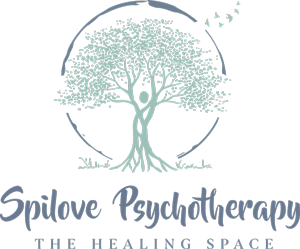Are you currently in search of a qualified CBT or DBT therapist in the Philadelphia area to support you on your mental health journey? Would you like to explore the ways in which Cognitive Behavioral Therapy (CBT) can assist you in overcoming challenges and reaching your goals? Feel free to visit our blog for valuable insights and information on these therapeutic approaches.
CBT in Philadelphia—What is Cognitive Behavioral Therapy & Is it Right For You?
If you are living in Philadelphia, Center City, or out on the Main Line and find yourself feeling trapped in a cycle of negative thoughts, you may want to learn more about how Cognitive Behavioral Therapy (CBT) could help. Click on this blog to gain a deeper understanding of the potential benefits of CBT and to explore how it can offer you the support you need. We're here to provide you with additional details and support as you consider this treatment option, empowering you to make informed decisions about your mental health journey.
Working with a Graduate Level Therapist in Philadelphia, PA
5 Ways To Be A Better Listener: Communication Through DBT Skills
DBT for Communication
by Megan Delp, MFT
The Dialectical Behavioral Therapy (or DBT) tenant called Interpersonal Effectiveness teaches us how to be a more effective communicator through learned to be a better listener. We have always known that progress depends on the ability to communicate effectively. The most effective communication does not begin with what a person says, but how well they hear the person they are communicating with. Only by listening effectively can you respond appropriately inany situation.
Throughout all forms of communication (reading, seeing, speaking, listening), we spend 40% of that time listening. And yet, we get less training in listening than in any other kind of communication. All throughout childhood, we are taught how to speak, how to read, but very little time is spent on learning how to listen. Learning to listen is difficult, but worth it.
For instance:
You can not NOT communicate. We're communicating verbally or nonverbally all the time.
Whenever contact is made, some form of communication does occur.
The true meaning of something is not in the words we use, it's in how people interpret the words.
Yet the meanings cannot be transferred. We can't just put a computer file directly in someone's head. We can only send the words. So listening becomes a critical skill if we are going to fully understand the meaning someone is trying to send us.
We have the ability to listen in many different ways - it is important to be able to distinguish how we are approaching our communication so that we are prepared to handle it effectively.
The Five Listening Approaches are:
1. Appreciative:
People are more likely to listen if you feel inspired by what you are hearing or if you are enjoying yourself. You’re not necessarily interested in the details when you are using Appreciative Listening, rather you are more focused on the impression of the experience.
2. Empathic:
This style is often a sounding-board to others. A person would offer support to the person they are listening to. They focus specifically on the feelings revealed by the person they are listening to. If you are often approached by people who need to confide or vent about something, you will know that's your typical approach to listening! This style is much more focused on offering compassion.
3. Comprehensive:
A comprehensive listener can recognize key details between one message and another even when the speaker is less than organized. They can also recognize when someone doesn't understand what is being said and can re-explain clearly in their own words.
4. Discerning:
This approach of listening wants to get all the information and may take detailed notes. Distractions can be very disturbing when using this listening approach. An example would be when other people are talking in class and you are trying to get all the notes.
5. Evaluative:
When listening with an evaluative approach, the listener will not automatically accept what is being said as true just because an expert says it. If they disagree, they will simply stop listening. They will also be more doubtful if the speaker is too passionate about their topic. This approach can be helpful when evaluating something and making a decision about it.
It can be highly useful to adapt your listening approach to the needs of the situation. For example, if a close friend is sharing their difficulties with you, you would want to be empathic and not evaluative. You have probably had the experience of someone giving you unsolicited advice when you really just wanted them to empathize with you! The opposite can also be true. When you recognize the correct listening approach in any situation, and use the appropriate listening approach, you can build better relationships, make the correct decisions and use your interpersonal effectiveness skills. It all starts with learning how to listen!
Megan Delp, MFTI
Megan is a pre-licensed Marriage and Family Therapist specializing in couples counseling and individual therapy for those struggling with depression, anxiety and relationship issues. Megan practices with Spilove Psychotherapy in West Chester, Pennsylvania and on the Main Line of Philadelphia in Bryn Mawr. For more information or to schedule a free 15 minute phone consultation, contact us here.
Get Proactive About Flashbacks and Intrusive Thoughts
What is PTSD?
According to the fifth edition of the Diagnostic Statistical Manuel of Mental Disorders (DSM V), Post Traumatic Stress Disorder or PTSD is a cluster of symptoms stemming from exposure to an event that was traumatic. In an attempt to heal, our bodies tend to re-play upsetting memories until the memory can be resolved. PTSD can seem difficult to manage. PTSD symptoms include things like intrusive thoughts and flashbacks. While the key to healing PTSD requires more involved therapeutic interventions such as EMDR, there are ways to manage some of the symptoms to make life in between therapy sessions a bit easier.
What is a Flashback?
Jane, a 28 year old abuse survivor, was out to dinner with her friends. Suddenly, a waiter drops a tray of food and the sound carries through the restaurant. Jane hears the clattering of dishes and silverware hitting the floor. Her body believes she is back in the kitchen from her childhood when her parents fought and kitchenware broke. Jane crawled under the table, and ducked her head under her arms. When one of her friends reached out to her under the table, she flinched and apologized to her mother, reliving the childhood scene with her parents. This is one example of what a PTSD flashback can look like.
A flashback is when a person who has experienced a traumatic event, re-experiences that event in their body. Flashbacks can be so powerful, that the body believes that the event is happening to them in real time.
Anticipating a Flashback
While there’s no way to be able to fully anticipate when a flashback might occur, there are some preventative measures you can take.
Learn what your triggers are -
Scan your history with flashbacks and traumatic situations to see if you can find some themes. In the example with Jane, she experienced trauma in the kitchen with sounds of breaking plates and glass. You might notice that there are certain situations like restaurants, the beach, or the grocery store – that can be triggering. There might also be objects, sounds, smells or people that can set off a flashback.
Be Prepared -
Once you have a good idea of what your triggers are, see if there’s a way to prepare for them. In Jane’s example – she might decide to avoid restaurants or just loud, busy ones for a while until some of her symptoms decrease. She might sit with her back to the wall so that she can see what is happening around her in real time.
Practice Mindfulness –
You can practice mindful awareness by checking in with yourself regularly to see what you are experiencing in your body. Notice if any anxiety or dissociative sensations are heightened. Some people describe their PTSD symptoms as sensations of feeling floaty, spacey, leaving their body, spacing-out, zoning out, feeling overwhelmed, high anxiety or easily startled. If you experience any of these sensations, pay attention on a regular basis. These sensations are warning signals that you could be easily triggered when you are in this state. If you catch the trigger early enough, you can avoid a flashback.
What to do when you’re triggered –
Once you notice that you are in a heightened state of anxiety or dissociation, use some tools to stay in the present; in your body.
Tools for PTSD Symptoms:
(note: don’t use any techniques or tools you find triggering)
Use the senses – taste, touch, smell, sound and sight
Drink some water slowly. Notice the cool sensation of the glass on your lips, the water in your mouth and the sensation as it goes down your throat.
Hold an ice cube. The cold can help you stay in your body by bringing your awareness to your hand.
Smell essential oils such as Bergamot (good for panic attacks) or Lavender (good for stress relief).
Light some incense – watch the smoke rise and coil, inhale the aroma.
Listen to music you find grounding. Pay attention to the words, tap your feet to the rhythm.
Play with Silly Putty or clay – notice the texture. Pay attention to the sensation of the clay in your hands.
Distract yourself and enlist friends to help you distract –
Try to think of as many baseball teams as possible. Take turns with friends in thinking of the names of all the teams.
Count backwards or say the alphabet backwards
Try to think of other categories such as names of movies, bands, TV shows, etc.
Ask someone else about how they’re doing
Get involved in a project like building model airplanes or re-arranging your closet. Something tactile that also involves thought is helpful.
Read an engaging book – this uses your sight, engages the sense of touch and distracts your mind.
When you’re thinking about where to put your shoes, your brain is less likely to slip back into a trauma memory.
To learn more about PTSD treatment, contact me at TiffanySpilove@yahoo.com










